Website Design 2025: Sustainable, Personalized, and Interactive Trends

Explore the leading website design trends for 2025. Learn about sustainable design, personalized user experiences, and interactive elements to create a successful website.
Website Design Trends in 2025: Towards the Future

The world of website design is constantly evolving, and 2025 promises to bring groundbreaking trends that will reshape how we interact with the internet. This article will explore the most important website design trends of 2025, focusing on sustainability, personalization, and interactive elements, while also analyzing their impact on SEO and conversion rates.
1. Green Web Design: Reducing Carbon Footprint
In the context of increasingly severe climate change, sustainable design is no longer an option but a necessity. Green web design focuses on reducing the carbon footprint of websites through various methods:
- Green Hosting: Choosing hosting providers that use renewable energy to power their servers.
- Image Optimization: Using compressed image formats (e.g., WebP) and optimizing image sizes to reduce page weight.
- Code Optimization: Minimizing unnecessary JavaScript and CSS code, using lazy loading techniques to only load necessary content when the user scrolls down the page.
- Minimalist Design: Limiting the use of complex animations and dynamic images, focusing on a simple, easy-to-use, and fast-loading interface.
A fast-loading website is not only environmentally friendly but also improves user experience, increases conversion rates, and improves SEO rankings. Companies like Vinawebapp.com, a professional website design company in Da Nang, Vietnam, have started integrating green design principles into their workflow, helping clients build environmentally friendly and effective websites.
2. Personalization: AI-Driven User Experience
Personalization is key to creating engaging user experiences and retaining customers. In 2025, AI will play an even more important role in personalizing the user experience on websites.
- Data Analysis: Using AI to analyze user data (e.g., browsing history, purchase behavior) to better understand the preferences and needs of each visitor.
- Customized Content Display: Displaying content, products, and services tailored to the individual user's preferences and behavior.
- Product Recommendations: Using AI to recommend products and services that users are likely to be interested in.
- Intelligent Chatbots: Using AI chatbots to provide 24/7 customer support and answer user questions quickly and efficiently.
Personalization not only helps increase conversion rates but also improves customer satisfaction and builds brand loyalty. Many businesses have recognized the importance of personalization and are investing in AI technologies to improve the user experience on their websites. Vinawebapp.com can help you implement effective personalization solutions for your website.
3. Interactive Elements: Animations, Micro-Interactions, and AR/VR
To capture the attention of users in an increasingly competitive digital world, websites need to be more interactive and engaging. In 2025, interactive elements such as animations, micro-interactions, and AR/VR will play a crucial role in creating memorable user experiences.
- Animations: Using animations to make websites more lively and attract user attention.
- Micro-Interactions: Using micro-interactions (e.g., hover feedback, success notifications) to provide visual feedback and improve user experience.
- AR/VR: Using AR/VR technology to create immersive and interactive user experiences. For example, allowing users to virtually try products before buying, or explore virtual spaces.
Interactive elements not only make websites more fun but also help users interact with content more easily and effectively. Tools like Webflow and Framer provide many features for creating complex interactive elements without having to write code. Vinawebapp.com can help you integrate interactive elements into your website to create a unique and engaging user experience.
Suitable Website Design Tools and Platforms
In 2025, there are many website design tools and platforms suitable for the above trends:
- Webflow: A powerful drag-and-drop website design platform that allows you to create complex websites without code.
- Framer: A professional user interface (UI) and user experience (UX) design tool that allows you to create highly interactive prototypes.
- WordPress: The world's most popular content management system (CMS), with many plugins that allow you to integrate personalization and interaction features.
Impact on SEO and Conversion Rates
Website design trends in 2025 have a significant impact on SEO and conversion rates:
- SEO: Green design (fast page load speeds) and a better user experience will improve SEO rankings.
- Conversion Rates: Personalization and interactive elements will increase conversion rates by providing an engaging and relevant user experience.
Real-World Examples
Many websites have already started adopting website design trends in 2025. For example, e-commerce websites use AI to recommend personalized products, and news websites use animations to capture the attention of readers. Vinawebapp.com is also helping local businesses in Da Nang implement advanced website design solutions to improve business performance.
In conclusion, website design trends in 2025 focus on sustainability, personalization, and interactive elements. Adopting these trends will help businesses create more effective, user-friendly, and environmentally friendly websites. Contact Vinawebapp.com for professional website design consulting and support, meeting the latest trends.

